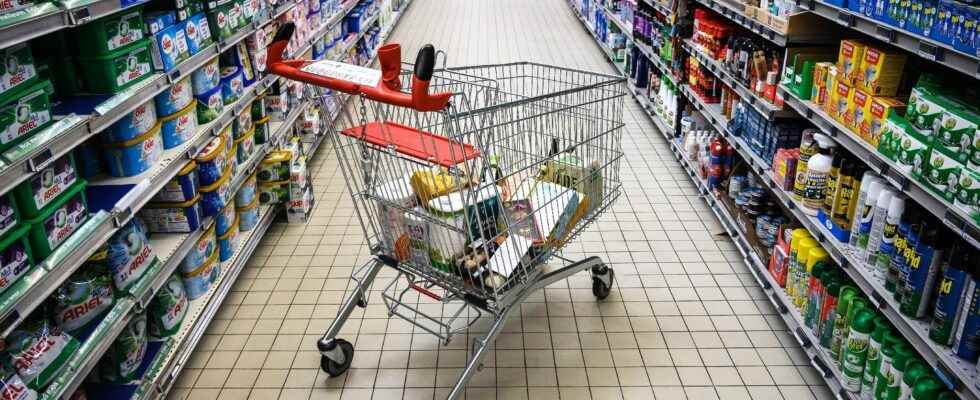Review of the year 2022: can do better. French economic activity showed resilience last year despite the energy crisis and inflation, but it has markedly stalled in recent months, heralding a certainly more difficult year in 2023. Gross Domestic Product (GDP) growth, which reached 2.6% in 2022, slowed sharply to 0.1% in the fourth quarter, weakened by household consumption directly affected by soaring prices. Last year, it mainly benefited from the rebound in activity recorded in the second part of 2021 “at the end of the health crisis”, explained the National Institute of Statistics (Insee). Quarter after quarter, it was then “significantly less dynamic”.
To view the graph, click here.
However, the figures are better than expected, as INSEE was expecting GDP up by 2.5% and a contraction of 0.2% in the fourth quarter. While the government was forecasting 2.7%, the Minister of the Economy, Bruno Le Maire, hailed “sustained” growth last year despite the tremors of the war in Ukraine. “It testifies to the strong rebound of our economy after the Covid shock and its resilience in the face of the energy crisis,” he said.
The Minister of the Economy also hailed the “resistance capacities […] exceptional” of French companies and employees. “We will also have positive growth” in 2023, he projected. In its latest forecasts, the government is counting on growth of 1%, an anticipation significantly higher than those of the Bank. France (0.3%) or the International Monetary Fund (0.7%).
Sharp drop in food purchases
The good performance of French activity masks a contrasting picture, however. The last three months of the year were marked by a sharp drop in household consumption of goods and services (-0.9%), the traditional engine of growth, penalized by a decline in purchases of food products. Household consumption expenditure on goods fell by 1.3% in France in December, notably weighed down by purchases of food products down 1.7%, INSEE said on Tuesday. This is the seventh month in a row where purchases of food products have fallen. This tumble is explained by the two-digit inflation that has plagued food products for several months. The prices of pasta, meat and eggs are particularly on the rise.
Energy consumption also fell in the fourth quarter, due to a very mild autumn but also to energy sobriety efforts, while the government rolled out support measures worth billions of euros to contain bills. . It should be noted that energy prices have also been rising sharply for months but, in December, the energy consumption of French households nevertheless increased by 0.7%, according to INSEE. “This new increase is mainly due to gas consumption, electricity consumption remaining on a downward trend”, comment the statisticians.
To view the graph, click here.
In France, consumer prices jumped by an annual average of 5.2% in 2022 and even flirted with 6% in the fourth quarter. This lower household consumption weighed on the production of goods and services, which decelerated by 0.2% over the October-December period, also affected by the fall strikes in the refineries. Due to their blockage, the refineries saw their production drop by 10%. In the energy sector, production remained “low”, according to INSEE, disrupted by the maintenance of nuclear reactors. Conversely, foreign trade made a positive contribution to GDP growth, with imports falling more sharply than exports. Although they continued to progress, investments lost momentum (0.8% after 2.3% in the third quarter).
The inflation rate rises to 6% in January 2023
“It’s a facade resistance of the French economy,” commented Maxime Darmet, economist at Allianz Trade, interviewed by AFP. “Consumption is doing badly and imports falling so much, it’s not a very good sign: it means that domestic demand is still very weak”. This bodes ill for 2023, when inflation should continue to accelerate to a peak expected by INSEE of around 7% at the start of the year. Having benefited so far from well-filled order books since the pandemic, “the manufacturing industry is starting to feel the effects of the global slowdown” with a drop in new orders, continues Maxime Darmet.
To view the graph, click here.
“This confirms” the scenario of “an economy entering a modest recession or at best stagnation in the first half of 2023”, adds the economist. The Banque de France expects a slowdown with 0.3% growth in 2023. It is more pessimistic than the government (+ 1%) which is counting on growth to initiate the recovery of public finances. Also faced with the energy crisis, Germany announced on Monday a decline of 0.2% in its GDP over the last three months of 2022, but could narrowly escape recession in 2023.
